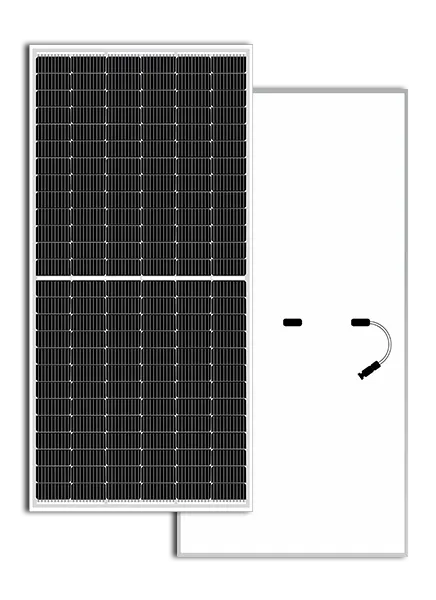- Module Power Range: 510-550 Wp
- Efficiency upto 21.29 %
- Power Tolerance: +4.99Wp
M10 - GLASS TO BACKSHEET

GLASS TO BACKSHEET
M10 - PIX MPH 144
144 Cells
Maximum Power Output - 550 Wp
Setting New Standards with Glass-to-Backsheet Technology
Glass-to-Backsheet (G2B) solar modules, exemplified by the M10 PIX MPH 144 model, signify a paradigm shift in solar photovoltaic technology. In this comprehensive guide, we explore the distinctive features, operational principles, advantages, and versatile applications of these innovative modules, showcasing their pivotal role in advancing the efficiency and reliability of solar energy systems.
Understanding Glass-to-Backsheet Modules
Glass-to-Backsheet modules integrate solar cells between a transparent glass front and a robust backsheet, embodying a design that prioritizes performance and durability. The M10 PIX MPH 144 model represents the latest evolution in this technology, combining cutting-edge features to optimize solar energy conversion.
Working Principle
The operational principle of Glass-to-Backsheet Modules involves capturing sunlight through the transparent glass surface, initiating the photovoltaic process within the solar cells. The backsheet provides structural support and protection to the cells, ensuring a reliable and long-lasting solar module
Advantages of Glass-to-Backsheet Modules
(a). Maximum Efficiency: The M10 model boasts enhanced solar energy conversion efficiency, making it a standout choice for maximizing power output in various environmental conditions.
(b). Advanced Materials: The use of state-of-the-art materials in the M10 PIX MPH 144 model contributes to superior durability, ensuring long-term reliability and performance.
(c). Streamlined Aesthetics: With a sleek design and seamless integration, these modules provide a visually pleasing solution for both residential and commercial installations.
Applications
The M10 PIX MPH 144 model finds diverse applications across different sectors:
(a). Residential Rooftop Installations: Ideal for homeowners seeking a high-performance and visually appealing solar solution for their rooftops.
(b). Commercial and Industrial Projects: Suited for large-scale solar installations, contributing to the energy needs of businesses and industries with top-tier efficiency.
(c). Architectural Integration: The streamlined design of Glass-to-Backsheet Modules allows for seamless integration into building structures, providing both functional and aesthetic benefits.
Maintenance and Care
Regular maintenance is crucial to ensure the sustained efficiency and longevity of Glass-to-Backsheet Modules - M10 - PIX MPH 144. Periodic cleaning to remove dirt and inspections for any signs of wear contribute to optimal performance.
Conclusion
Glass-to-Backsheet Modules, particularly the M10 PIX MPH 144 model, represent the pinnacle of solar technology, offering a perfect balance of efficiency, durability, and aesthetics. As the world continues its transition towards sustainable energy these modules play a pivotal role in shaping the future of solar energy. Whether powering residential homes, industrial complexes, or architecturally integrated structures, Glass-to-Backsheet Modules contribute to a cleaner and more sustainable energy landscape.
Product Features
Enhanced-Cell
Improved Thermal Coefficients
PID Resistance
Robust Construction
Smart Energy Generation
Versatile Installation Options